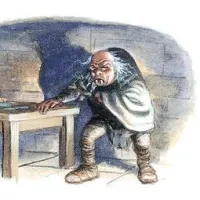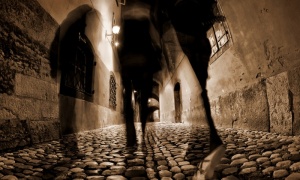During the reign of King Louis XIV, an enigmatic man spent several decades confined to the Bastille and other French prisons. No one knew his identity or why he was in jail. Even stranger, no one knew what he looked like—the prisoner was never seen without a mask covering his face. The anonymous prisoner has since inspired countless stories and legends, yet most historians agree that he existed. The mysterious prisoner lived during the reign of Louis XIV. To his supporters, Louis was le Roi Soleil (“the Sun King”) in whose reign France expanded and strengthened her borders. To his detractors, he was a near tyrant, whose belief in absolutism—the idea that he ruled as God’s representative on Earth—had turned France into a police state. After his death, the unknown prisoner’s story began to take on a life of its own as gossips said that his punishment stemmed directly from the French throne. From the very outset, the “masked man” stories were more than just lurid tales: They played directly into anti-Louis propaganda. During the Nine Years’ War (1688-1697) the Dutch, fighting to protect their republic from French expansion, exploited the rumor to undermine the legitimacy of Louis XIV. Agents of the Dutch spread claims that the masked prisoner was a former lover of the queen mother, and was the king’s real father—which would make Louis illegitimate. Historians have, however, discounted the theory popularised by famed philosopher Voltaire and writer Alexandre Dumas that the masked man was the twin brother of Louis XIV. So who was he?
In the 1680s, whispers about a mysterious prisoner began to spread through France. Details were hazy, but the tale was arresting: An anonymous man had been locked up on the express orders of the French king Louis XIV. His identity was unknown, and his face could not be seen because he was forced to wear an iron mask. A gazette from 1687 mentions the prisoner’s transfer to the citadel of Sainte-Marguerite, a tiny Mediterranean island off the coast of Cannes in southern France, in the custody of a former musketeer, Bénigne de Saint-Mars. Both guard and his prisoner had previously lived at the fortresses of Pignerol and Exilles in the Alps. The pair moved again in 1698, when Saint-Mars was appointed governor of the Bastille prison in Paris. The mysterious prisoner’s arrangements had not changed from earlier accounts: A Bastille official wrote in his memoirs of his surprise at the arrival of his new superior who was accompanied by a man “who is always masked and whose name is never pronounced.” When he died in the Bastille in 1703, it was recorded that a man in his 50s was buried at the Saint-Paul Cemetery in Paris, and his belongings and clothes were burned at dawn. It was said that the walls of his cell were even scraped and whitewashed.
Hundreds of different candidates have been proposed ranging from a member of the royal family to a disgraced French general and even the playwright Molière. Still, evidence indicates that only two prisoners were in custody during the same timeframe as the “Mask”: Ercole Matthiole and Eustache Dauger. Matthiole was an Italian count who was abducted and jailed after he tried to double-cross Louis XIV during political negotiations in the late-1670s. He was a longtime prisoner, and his name is similar to “Marchioly”—the alias under which the Mask was buried. Even more convincing is that Louis XV and Louis XVI both supposedly said the Mask was an Italian nobleman. Unfortunately, Matthiole likely died in 1694—several years too early for him to be the Mask. With this in mind, many to point to the enigmatic Eustache Dauger as the more likely culprit. His 1669 arrest warrant included a letter from a royal minister instructing jailers to restrict his contact with others and to “threaten him with death if he speaks one word except about his actual needs.” Dauger was frequently shepherded between several prisons, and once was transported in a covered chair so that passersby would not see his face. While Dauger is a popular candidate for being the Mask, historians still don’t know who he was or if his name was a pseudonym.
Another candidate for the masked man was François de Bourbon, Duke of Beaufort. A cousin of the king, François had been one of the leaders of the Fronde, the faction that conspired against the king early in his reign and hardened his tendency toward absolutism. Although François later died in battle, gossipmongers spread the (unlikely) tale of his kidnapping and imprisonment by the king. By the 18th century the number of possible identities kept increasing. Some said the man in the iron mask was a bastard son of Anne of Austria (Louis’s mother) and half brother to the king. Some pamphleteers imagined that the mask was Louis XIV’s punishment for the lovers of his wife, Marie-Thérèse of Austria. One particularly fantastic suggestion is that the man was one Nabo, a pygmy page who had supposedly impregnated Louis’s queen. Historians even believe the iron mask itself was an exaggeration. It was not iron at all, but black velvet – and it was most likely worn only at very specific times, such as transferal from one prison to another. Perhaps it was a glimpse of such a man, when coupled with the tense atmosphere in France, that snowballed to become the intriguing legend known today.

















Leave a comment